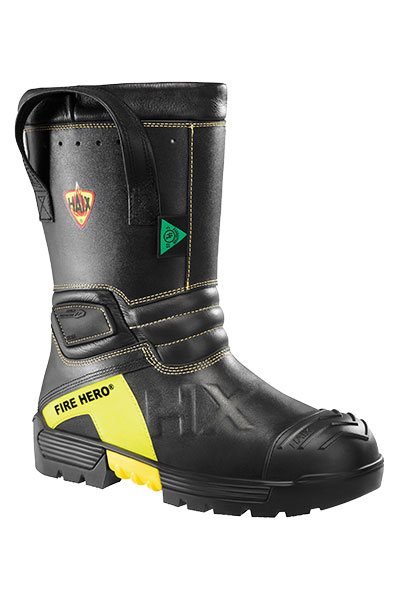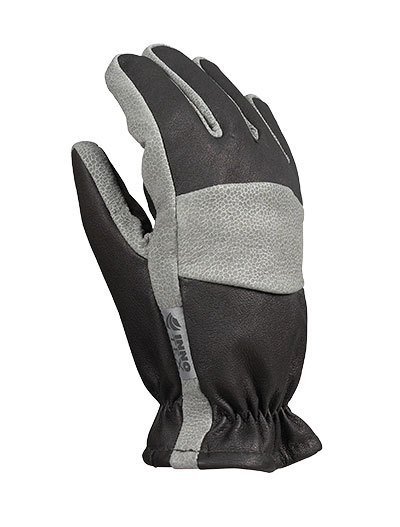
Equipment
Techsmart: Protecting Extremities
Everyone knows that comfort is key on the fire ground. Extremities are often the hardest parts of the body to keep comfortable – frozen toes, hot hands, reduced dexterity and stiff soles, to name a few issues.
September 9, 2013
By Olivia D’Orazio
Everyone knows that comfort is key on the fire ground. Extremities are often the hardest parts of the body to keep comfortable – frozen toes, hot hands, reduced dexterity and stiff soles, to name a few issues.
 |
|
| Haix says its Fire Hero boot is more comfortable and lightweight than traditional boots, mainly due to the polyurethane foam injected into its sole for better shock absorption. Photo courtesy Haix
|
Many gear manufacturers are working hard to improve their products’ comfort. Boot manufacturers, such as Globe and Haix, for example, have developed flexible and lightweight fire boots, making it more comfortable for firefighters to work on the fire ground.
“It’s not just comfort – it’s really performance,” says Mark Mordecai, director of business development for Globe.
“Your feet are designed to be able to flex up to a 50-degree angle; if your boots don’t flex as much, it will affect your gait, your stance and your ability to do your job.”
Globe’s Supralite boot, for example, offers features such as a slip-resistant tread, making working in icy conditions or on a ladder safer. The boot’s upper also uses Globe’s Dragonhide fabric, which the company uses to reinforce and strengthen its turnout gear.
Globe’s composite protection plate better insulates the foot, protecting against cold weather or wet conditions. The sole itself is made from a neoprene-based compound, instead of traditional rubber-based compounds. This further improves flexibility in the boot, allowing firefighters to crouch or kneel in comfort during long suppression operations.
“This is a boot that you can literally run in,” Mordecai says. “It provides firefighters with that athletic performance.”
Haix’s Fire Hero Xtreme boot, meanwhile, has polyurethane foam injected into its sole for better shock absorption and heat/cold insulation. This foam, however, also makes the boot lighter than traditional rubber soles. This means firefighters won’t fatigue as quickly when they’re moving around the fire ground – climbing stairs, retrieving tools from the truck, or laying hose.
Haix says its boots have good ankle support, which helps to prevent sprains.
“[Firefighters’] feet get them in and out [of a structure],” says Haix spokeswoman Sandy Longarzo.
“They need to be able to run and jump, and good-fitting boots prevent injuries [during those activities].”
Jennifer Mabee, a firefighter with the Township of Georgian Bay Fire Department in Ontario and a Canadian Firefighter and EMS Quarterly columnist, says that comfort on the fire ground certainly affects performance.
“If you’ve got gloves or boots that are too big or too bulky it makes it harder to complete tasks that require fine motor skills,” she says.
“It allows you to do your job that much better when your equipment fits properly.”
For more information on the Haix boot, visit www.haix-bootstore.com , and for details on the Globe boot, visit www.globeturnoutgear.com .
 |
|
| Innotex’s new line of gloves uses the company’s Pyro-Pro insert, which provides higher radiant heat protection on the back of the hand and better breathability and dexterity for the palm of the hand. Photo courtesy innotex
|
Hands require the same care when it comes to protection and comfort. Just as flame resistance and heat protection are important considerations for boots, so should gloves have attention paid to their protective properties.
Innotex’s new line of gloves uses its Pyro-Pro insert, which combines a higher density membrane to provide higher radiant heat protection on the back of the hand, while the lighter density membrane offers better breathability and dexterity for the palm of the hand.
“Firefighters work with their hands all the time,” says Stéphane Rousse, marketing and R & D co-ordinator at Innotex.
Rousse says the glove has a three-dimensional design that follows the shape of the hand, making the glove more comfortable.
“In cold weather especially . . . if your equipment doesn’t fit right or isn’t working properly you’re going to get cold sooner,” Mabee says.
“If it’s an MVC call, for example, you need to be able to use your hands.”
For more information on Innotex’s gloves, visit www.innotexprotection.com .
Print this page